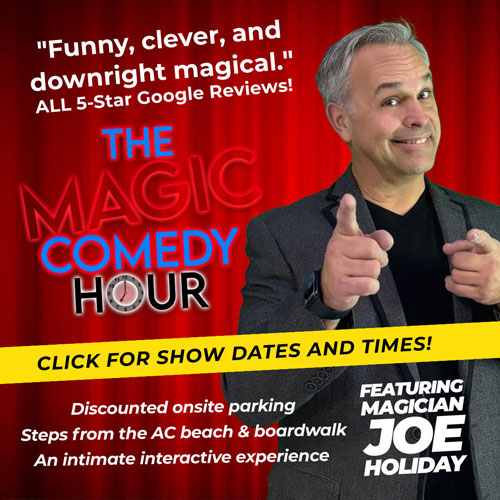One last goodbye: My mother’s story
By Robin Stoloff
Stroke is personal to me. I lost my mom to a stroke in 2021. She had just had surgery to clear a clogged artery in her neck and was looking forward to coming home. When my dad arrived with a cup of coffee and a sandwich in hand, he was stunned to find her unable to lift her arm. She looked at him and said, “Something happened to me.” Nurses and doctors rushed in to help, and that was the last time he spoke to her. They kept her alive on a ventilator so the family could say goodbye. As she lay surrounded by loved ones, I held her hand and kissed her one final time, tears streaming down my face. It was the worst day of my life.
My mom was a beautiful, warm, and loving woman; a fierce mama bear who would do anything for her family. But she, like so many Americans, was sedentary and overweight. Despite never smoking, she battled throat cancer and survived chemo and radiation. She was also a breast cancer survivor, had emergency gallbladder surgery, and endured a bout of shingles. She was not in peak health, and at age eighty-two, changing lifelong habits felt overwhelming to her. I urged her to take walks and eat a little healthier, but it was an uphill battle. Thinking back on her lifestyle, I wish I pushed harder, but it was not to be.
May is Stroke Awareness Month, a time to learn, prepare, and empower ourselves and our loved ones. Every year in the United States, nearly 800,000 people suffer a stroke, and more than 140,000 die from it, making stroke the fifth leading cause of death and a leading cause of serious, long-term disability. Worldwide, someone has a stroke every two seconds, and every six seconds, one person dies of a stroke. Those are not just statistics; they represent sons and daughters, parents and friends whose lives are forever changed or cut short. Yet, the most heartbreaking part is that up to 80 percent of strokes could be prevented through lifestyle changes and medical management. We know more than ever about how to prevent strokes, how to spot them fast, and how to treat them before they cause serious damage. That knowledge can help us save lives, including our own.
There’s a critical window in stroke care often called the “golden hour.” During a stroke, roughly 1.9 million brain cells die every minute. That means delayed treatment can lead to irreversible damage in mere minutes. The faster a stroke victim receives medical attention, ideally within the first hour, the greater the chance of minimizing brain injury and maximizing recovery. Clot-busting medications like tPA (tissue plasminogen activator) are most effective when administered within three to four hours of symptoms begin and mechanical thrombectomy devices can physically remove clots if used within six to twenty-four hours under the right conditions. But none of these treatments help unless you reach a hospital immediately. Even with the fastest, most advanced care, as I painfully learned with my mother, a positive outcome isn’t guaranteed.
Every minute counts during a stroke. Keep FAST in mind:
Remember FAST
Face drooping: Ask the person to smile. Does one side sag?
Arm weakness: Can they raise both arms? Does one drift downward?
Speech difficulty: Is their speech slurred or strange?
Time to call 911: Even if symptoms subside, dial immediately.
Public education campaigns have shown that by teaching communities FAST, we can shave minutes off response times. Those precious minutes mean fewer families facing the heartache and lifelong challenges that follow a severe stroke.
Stroke used to be considered an “older person’s” disease, but rates in younger adults have been rising steadily over the past two decades. High blood pressure, diabetes, smoking, high cholesterol, obesity, and sedentary lifestyles are driving this increase—and the good news is that these risk factors are largely within our control. Advances in wearable technology now allow us to monitor heart rhythm, blood pressure, and activity levels around the clock. Smartwatches can detect atrial fibrillation, a leading cause of stroke, prompting users to seek medical evaluation before disaster strikes.
Medical science is also on the move. Mobile stroke units, ambulances equipped with CT scanners and specialized stroke teams, bring hospital-grade diagnostics straight to the patient’s doorstep, cutting treatment times dramatically. New clot retrieval devices allow interventional radiologists to snatch clots from deep within the brain’s vessels, restoring blood flow and improving outcomes even hours after a stroke begins.
Advance treatment options and knowing the warning signs are crucial—but our strongest defense is preventing a stroke in the first place.
Know your numbers. Regularly track blood pressure, cholesterol, and blood sugar. Aim for a blood pressure below 120/80 mm Hg, LDL cholesterol under 100 mg/dL, and HbA1c below 7 percent if you have diabetes.
Move more. Even ten minutes of walking three times a day can lower stroke risk by up to 27 percent.
Eat smart. A diet rich in fruits, vegetables, whole grains, lean proteins, and healthy fats can reduce hypertension and improve lipid profiles.
Talk with your doctor. Routine check-ups reveal silent threats like high blood pressure or atrial fibrillation long before symptoms appear.
Quit smoking. Within two years of quitting, stroke risk drops to nearly that of a non-smoker.
Stroke Awareness Month isn’t just another observance. It is a call to action rooted in personal experience and driven by hope. My mother’s story reminds me that every second and every lifestyle choice matters. This May, let’s honor those we’ve lost and protect those we love by staying informed, watching for FAST signs, and acting immediately at the first hint of trouble. Together, we can turn awareness into action and save lives, one minute, one heartbeat, one stroke at a time.
Robin is a former television reporter for NBC News 40. She currently hosts a podcast and radio program called Living Well with Robin Stoloff. It airs Sundays at 10 AM on Lite 96.9. You can email Robin at livingwellwithrobin@gmail.com














